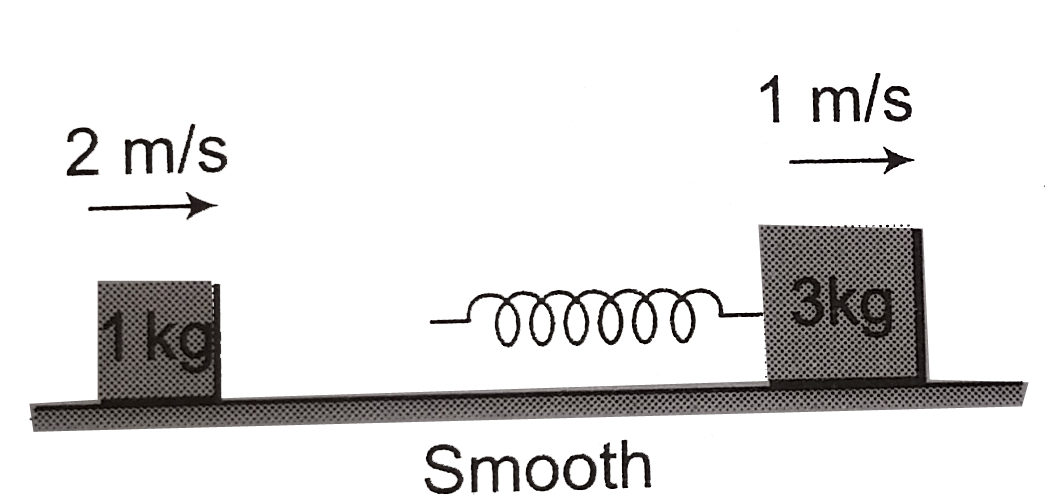A
B
C
D
Text Solution
Verified by Experts
The correct Answer is:
|
Topper's Solved these Questions
CENTER OF MASS
CP SINGH|Exercise Exercises|150 VideosView PlaylistCIRCULAR MOTION
CP SINGH|Exercise Exercise|90 VideosView Playlist
Similar Questions
Explore conceptually related problems
Knowledge Check
A
B
C
D
Submit
A
B
C
D
Submit
A
B
C
D
Submit
Similar Questions
Explore conceptually related problems
CP SINGH-CENTER OF MASS-Exercises
- A ball of mass m moving with speed v(0) strikes a block of mass 3 m ke...
03:45
|
Play - In the previous problem , mass of the ball is 10 g and it is moving wi...
06:25
|
Play - Two blocks of masses 1 kg and 3 kg are moving with velocities 2 m//s a...
06:08
|
Playing Now - Initially spring is in its natural length . The block of mass 3 kg in ...
04:03
|
Play - In the previous problem , the maximum elongation of the spring is
07:06
|
Play - When the spring is compressed to maximum , what fraction of incidetn t...
06:16
|
Play - If blocks collide elastically head - on , the ratio of maximum compres...
06:40
|
Play - Two identical blocks A and B , each of mass m resting on smooth floor ...
04:08
|
Play - The ball sticks to block C, then block Ccollides elastically , head - ...
08:43
|
Play - A particle of mass m moving with kinetic energy K, makes a head - on e...
04:22
|
Play - Two trolleys of mass m and 3 m are attached by a spring. The spring wa...
04:41
|
Play - A ball of mass 0.5 kg moving with a velocity of 2 m//s strikes a wall ...
02:42
|
Play - A ball of 50 g strikes a smooth wall with speed 20 m//s as shown. If ...
04:11
|
Play - In the previous problem , if the collision is inelastic and e = 1//2
06:16
|
Play - Consider the situation as shown in the diagram , the ball strikes the ...
04:16
|
Play - In the previous problem , if the collision is inelastic and the coeffi...
02:18
|
Play - In head - on collision between two particles A and B of same mass , A ...
05:55
|
Play - A ball of mass m is dropped onto a floor from a certain height. The co...
03:36
|
Play - A metal ball and a rubber ball , both having the same mass , strike a ...
03:37
|
Play - n balls each of mass m impinge elastically each second on a surface wi...
01:47
|
Play

